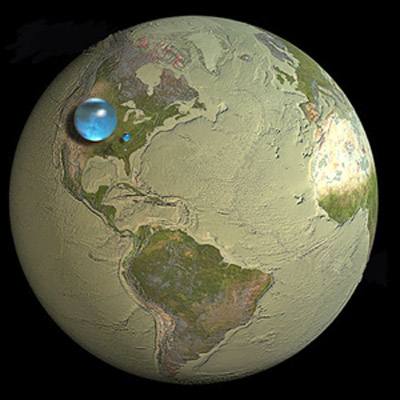 |
| Fig. 1 Warming trend since 1880 (GISSTEMP). |
Since that warming cannot escape back into space in an amount that equates to a balance (because of green house gases), an unhealthy amount of it is trapped within the Earth's realm.
Like a disease, the phenomenon spreads into the ocean, which absorbs about 93% of that trapped excess solar warmth entering the atmosphere of our planet (BCNet).
 |
| Fig. 2 Sea level rise since 1880 |
The amount of this warming increases with time, meaning that as we go back in time there is less thermal increase, as the graph at Fig. 1 shows.
That 93% of warmth is a smaller and smaller amount of heat as we go back in time, so, thermal expansion of the ocean likewise is naturally smaller and smaller as we go back in time.
Logically then, the percentage of sea level rise attributable to thermal expansion is less and less as we consider these historical measurements.
 |
| Fig. 3 Thermal expansion since 1880 |
Thus, it is simple to see that 1×.93 = 0.93, while, for example, 0.2×.93 = 0.19.
That is why I wonder about some scientists who have indicated that thermal expansion is "the major cause" of sea level rise, going back to 1880.
 |
| Fig. 4 Ice melt is not linear |
I have also urged them to realize that the vast ice sheets and the land based glaciers have been melting back as far as when the 93% was only 0.19 or less.
Note that it takes less heat to add mass-increase based sea level rise to the oceans via ice melt, than it does to cause thermal expansion of the oceans (see e.g. Antarctica 2.0, Proof of Concept - 5, and of course The Ghost-Water Constant, 2, 3, 4, 5, 6, 7, 8, 9 and The Gravity of Sea Level Change, 2, 3, 4).
My most recent endeavor to convince them is based on implementing the sophisticated TEOS-10 oceanography software toolkit (Questionable "Scientific" Papers - 13, Mistakes Of The Dredd Blog Kind).
I have a module working that calculates thermal expansion back to 1880, but more importantly, it also calculates thermal expansion based on real-world measurements from the World Ocean Database records (Fig. 3).
 |
| Fig. 5 Some numerical values |
The database has actual records, in this case, from 1956 to the current year, and those measurements used to produce that graph contain depth, water temperature at that depth, salinity at that depth, the latitude and longitude location where the measurements were taken, the date and time, the scientist involved, etc.
That is enough data to facilitate the TEOS-10 toolkit which I mentioned above, and enough data to thereby calculate both thermal expansion and contraction.
I applied the values of 1.332 x 109 km3 (ocean volume) and 3682.2 m (average ocean depth) from Woods Hole research (Ocean's Depth and Volume Revealed).
I attached that volume to the year 1956, and began calculations from there to 2016 (2017 data is not complete, so it is not yet used).
Upon completion of that, I had sufficient information, based on real numbers, with which to project (like trying to calculate the future of temperatures) those values into the past, clued in by the GISS surface temperature history shown in Fig. 1.
After generating estimates (for ocean water conservative temperature, sea pressure, absolute salinity, etc.) going back to 1880 (involving decreasing water temperatures a la the decreasing non-water temperatures shown in Fig. 1), I was ready to generate thermal expansion values (i.e. steric, thermal volume change, assuming a constant ocean mass, but with a changing ocean volume based on ocean conservative temperature, absolute salinity, sea pressure, etc. at various depths).
The screen capture at Fig. 5 shows values of ocean volume at 1880, 1956, and 2016, which are the significant years involved (1880 = beginning, 2016=ending, and 1956 is the beginning of actual data via WOD measurements).
The section 1880-1955 is totally estimation, while the 1956-2016 section is not.
The 1956-2016 is based on recorded ocean value changes from which volume changes, due to temperature and other factors caused by warming, can be generated.
The next post in this series is here, the previous post in this series is here.
"Anybody have any questions?" asks the lead singer at the end of the performance.



